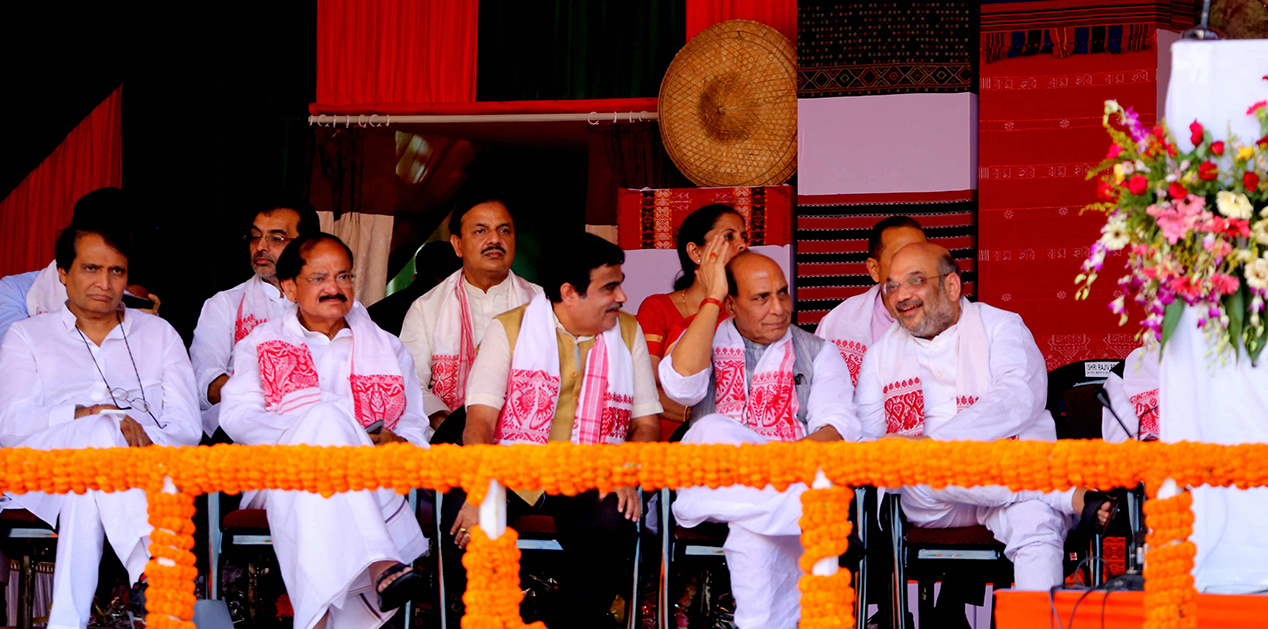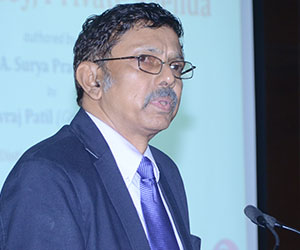Two facts are now confirmed after the latest round of assembly elections. One, the shrinking base of India’s grand old party – The Congress – and two, the growing geographical spread of its most aggressive opponent – the Bharatiya Janata Party (BJP).
When the changing political hues of the 29 states over the last five years are presented in graphic form, one realises that the BJP’s claim that it is on the rise cannot be disputed. Nor can one attribute the party President, Mr.Amit Shah’s claim that his party’s influence extends from Kanyakumari to Kashmir and from Kamrup to Kutch, to mere hyperbole. It is real and those who are in denial, specially the opponents of the BJP, will have to reconcile themselves to this new reality, sooner rather than later.
As far as the Congress Party is concerned, this is indeed a very trying time. As we have seen in the past, state assembly elections are generally won or lost on state-related issues. Often, even when a national party has a fairly good image at the national level, it is unable to transfer this goodwill to a state where it is fighting an anti-incumbency sentiment.
That being the case, the Congress Party, which has an identity crisis at the national level, had little chance of overcoming this sentiment in Assam and Kerala. Also, the party’s decision to align with the communists in West Bengal and battle them in Kerala just did not make sense. Many found it difficult to accept this contradiction. Therefore, apart from issues like leadership, poor political judgement and intra-party conflicts which have cost the Congress Party these two key states, the party’s overall national image has taken a major hit in recent years because of the company that it keeps.
Many believe that the party’s dangerous liaison with ultra-left elements who raised anti-national slogans in Jawaharlal Nehru University and elsewhere, has completely compromised its democratic and nationalist credentials. By doing so, it has played into the hands of its main opponent – the BJP – and allowed its opponents to question its commitment to the unity and integrity of India.
The BJP has won in just one of the four states that went to polls recently – Assam--yet there is much hype over its success because prior to this round of elections, it had just five seats in these state assemblies. It now has 64. Also, its vote share has seen a spectacular jump from 11.50 per cent to 29.50 per cent in Assam; 6 to 10.50 per cent in Kerala and 4 per cent to 10.20 per cent in West Bengal.
In Assam, while the BJP on its own picked up 29.50 per cent of the vote, its alliance partners –the Asom Gana Parishad and the Bodoland Peoples’ Front mustered just over 12 per cent, taking the alliance’s vote share to around 42 per cent – thus establishing a clear margin of 11 per cent over the Congress Party, which managed to secure just 31 per cent of the votes. This enabled the BJP-led alliance to win a record 86 seats in the 126 member state assembly.
The party has done well in West Bengal and Kerala as well. In the former, it has won three seats, but more importantly garnered 10.20 per cent of the vote. In Kerala, the alliance it headed bagged 14.40 per cent of the vote and the party finally opened its account with one seat. Tamil Nadu was the only state where the party could not make any dent.
Despite its comfortable victory in Kerala, the Left Front is hardly in a celebratory mood because of its disastrous showing in West Bengal, which was its biggest stronghold for close to four decades. The issue at hand was the fateful decision taken by the Left Front to have an electoral alliance with the Congress. This is being described as a “historic blunder” by political pundits both within the Left’s ideological ambit and outside and my sympathisers of the Left Front.
As a result of this decision, the Left Front’s vote share has dropped from 40 per cent in 2011 to 26 per cent this time and also reduced its seats in the state assembly from 61 to 31. The decimation in West Bengal has robbed the Left Front of the joy of savouring the success achieved in Kerala, despite its creditable performance. Interestingly, in Kerala, the margin between the two fronts was usually very thin, but it was different this time around because of the new kid on the block – the BJP. While the BJP on its own secured 10.50 per cent of the vote, its alliance secured 14.40 per cent of the votes, thus giving the contest a triangular look this time. Like the BJP, the communists too had little or no presence in Tamil Nadu.
Finally, a word about the far reaching changes that have taken place in the political complexion of various states over the last five years. The BJP was in power in six states on its own and in three others as part of a coalition in 2011. It has since expanded its control to 13 states of which 4 are coalition governments. On the other hand, the Congress was in power in 11 states on its own and in two other states as part of an alliance. Today, it controls six states and is part of the ruling alliance in Bihar and in the union territory of Puducherry. After the loss of Assam and Kerala, the only big state left with it is Karnataka. Other than this state, it currently rules Himachal Pradesh, Uttarakhand, Manipur, Meghalaya and Mizoram. All these six states and Puducherry add up to a dismal 43 seats in the Lok Sabha, one less than what it secured in the last Lok Sabha election!
As we have often seen in electoral politics, one can never write of any political party. The Congress can hope for a miracle turn around just as the BJP did after its disastrous showing in 1984, when it won just two seats in the Lok Sabha. From there, it rose from the ashes, as it were, and grew from 2 in 1984 to 182 in 1999 and then onto 282 in 2014. But, as Mr.Digvijay Singh has said, sometimes there is need for “a major surgery” to bring a political party back into the reckoning. Is the Congress ready for the much awaited “operation”?
Published Date: 6th June 2016, Image Source: http://www.ndtv.com
(Disclaimer: The views and opinions expressed in this article are those of the author and do not necessarily reflect the official policy or position of the Vivekananda International Foundation)










Post new comment